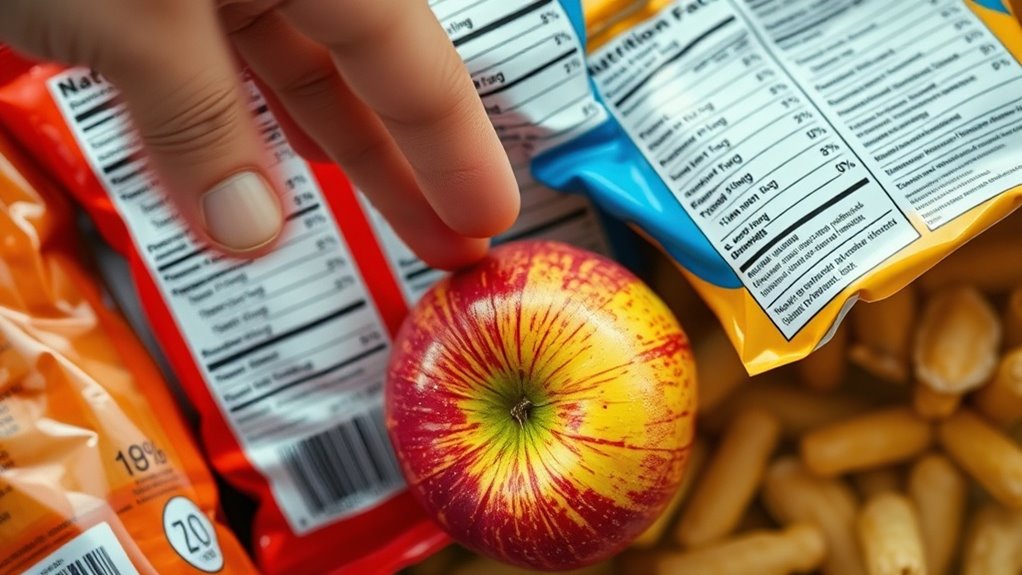Why You Should Rethink How You Read Nutrition Labels
When you glance at nutrition labels, are you truly aware of what they mean for your health? It’s easy to overlook serving sizes, misleading claims, and ingredient lists filled with hidden dangers. These aspects can significantly impact your dietary choices and overall wellbeing. You might think you’re making healthy decisions, but a closer look could reveal surprises that challenge that assumption. Understanding this intricacy could change the way you approach your food choices altogether.
Understanding Serving Sizes
When you glance at nutrition labels, it’s crucial to pay attention to serving sizes, since they establish the basis for the information that follows.
Serving sizes determine the amount of calories, fats, and nutrients you consume. Misjudging them can lead to unintended overconsumption or underconsumption, impacting your health.
Always compare your portion to the serving size listed to make informed dietary choices.
Decoding Nutritional Claims
How do you know which nutritional claims to trust? Look for evidence-based claims and steer clear of buzzwords. Here’s a simple guide:
| Claim Type | Meaning | Trust Level |
|---|---|---|
| “Low Fat” | Contains less than 3g fat per serving | Moderate |
| “Organic” | Grown without synthetic pesticides | High |
| “Whole Grain” | Contains all parts of the grain | High |
Assess these claims carefully!
The Importance of Ingredient Lists
While nutritional claims can help guide your choices, ingredient lists provide a clearer picture of what you’re really consuming.
Pay attention to:
- The order of ingredients; the first few are most prevalent.
- Unrecognizable items; they might indicate additives or preservatives.
- Whole foods; prioritize them for better health.
- Allergens; check for any that might affect you.
Understanding these elements enhances informed decisions, especially since many packaged foods lack essential nutrients which can lead to deficiencies.
Recognizing Hidden Sugars and Fats
Many people don’t realize that hidden sugars and unhealthy fats lurk in everyday foods, making it crucial to scrutinize nutrition labels.
Look for terms like high fructose corn syrup, cane sugar, and various oils, such as palm or hydrogenated oils. These ingredients can contribute to weight gain and health issues.
Understanding these labels empowers you to make better dietary choices.
Making Informed Choices With Nutrition Labels
To truly benefit from nutrition labels, focus on these key aspects:
- Check serving sizes to avoid overeating.
- Compare total sugars and added sugars for clarity.
- Look at fiber content to gauge healthiness.
- Prioritize natural ingredients over artificial additives. Additionally, being cautious of misleading health claims on packaged foods can enhance your understanding of whole, minimally processed foods.

